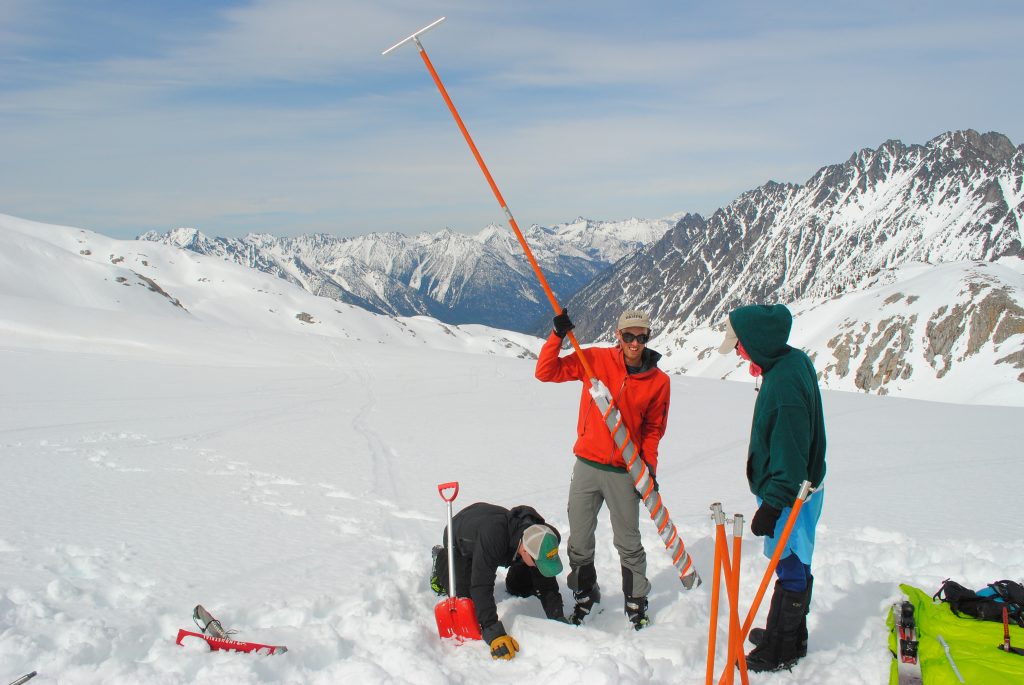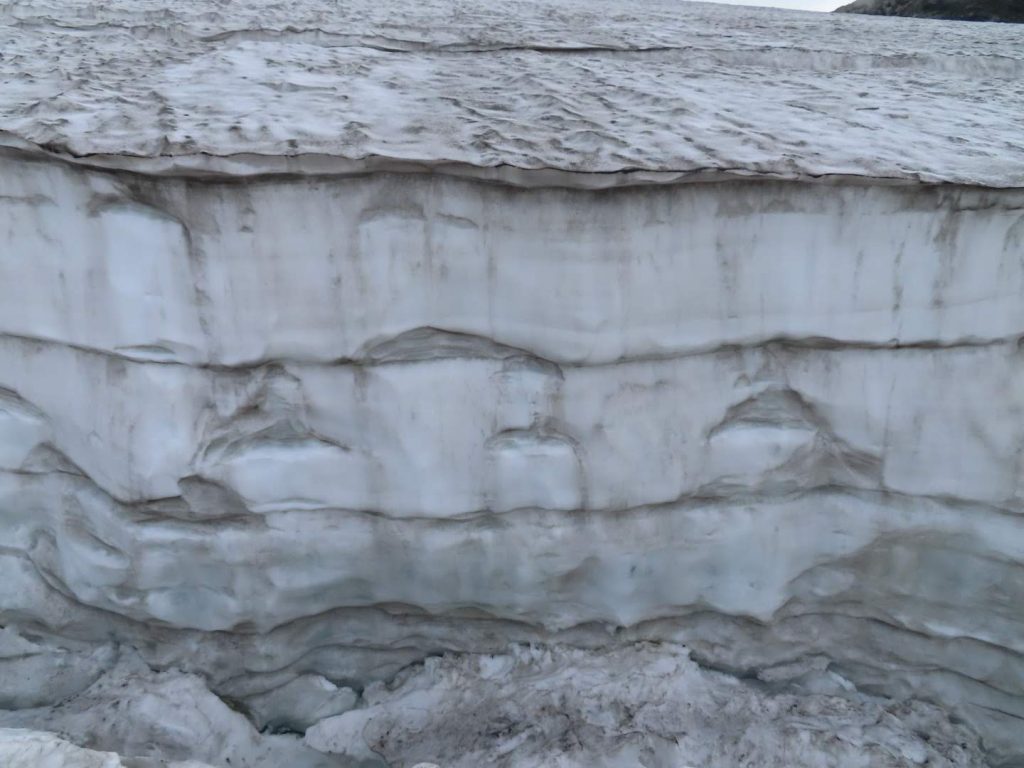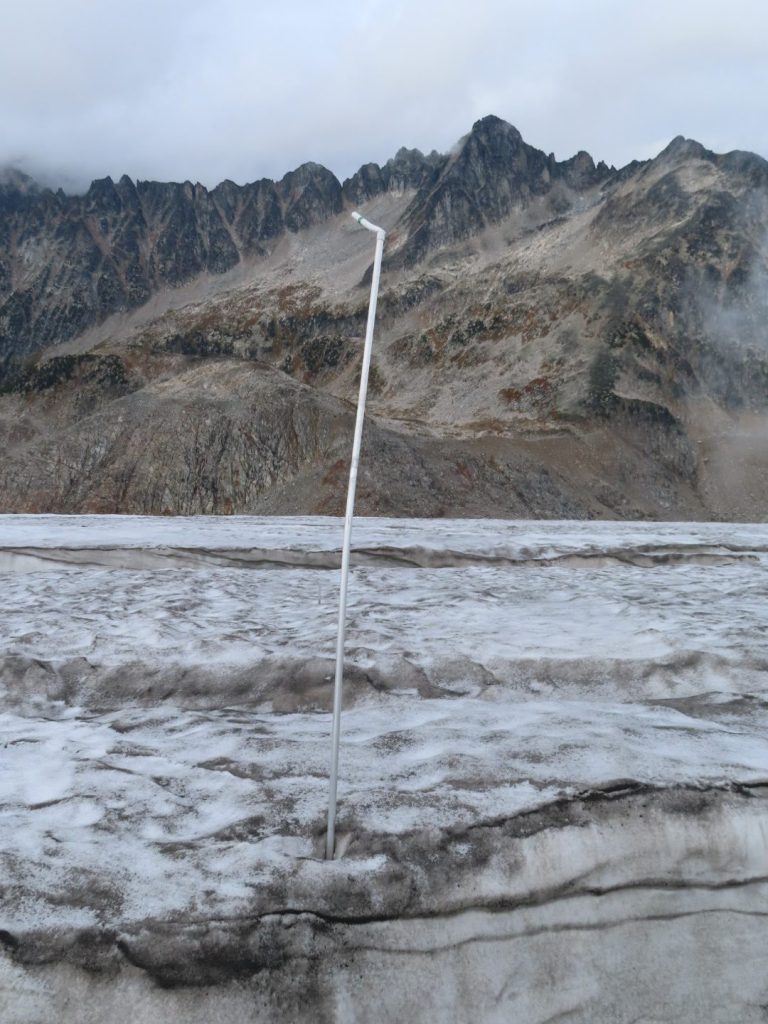Kokanee Glacier Melt
Categories:
Since 2013, Brian Menounos’ team at UNBC has been doing research on the Kokanee Glacier just outside of Nelson in southeastern B.C. This work began as part of a five-year study of the cryosphere (frozen environments) in the Canadian portion of the Columbia River Basin. This project was carried out by the Canadian Columbia River Snow and Glacier Research Network — spearheaded by the Columbia Basin Trust. Funding from the BC Parks Living Lab Program supported additional work on this project in 2019-2021, which contributed to a continuous nine-year data record.
During a 2021 spring trip, the team found that the Kokanee Glacier had an average snow depth of 4.4 metres. They found that the winter balance (w.e.), (how much water equivalent was gained or lost over a period of time) for 2021 was 1.91 metres water equivalent (w.e.). This value was lower than the 2013-2020 average of 2.18m w.e.
In the summer of 2021, multiple heat waves occurred, with temperature records being broken across the province. The summer took a blowtorch to glaciers across the region and all over B.C., wildfires burned, swamping the region in smoke for weeks.
On September 12, the team hiked into the Kokanee Glacier, stopping under a boulder to wait out a thunderstorm. They were pelted with bursts of hail, and soaked in the rain, before gingerly working their way up the boulder field to Kokanee Glacier. Like the satellite imagery had shown, there was no snow in sight on the glacier — only bare ice. Stepping out onto the glacier, they immediately ran into difficult terrain. Crevasse bridges of snow or firn (compacted, granular snow) had collapsed, necessitating an exercise in maze navigation. The first stop was a stake at 2600 m which typically retains snow, but this year had lost 1.6 metres. Two stakes drilled at the site in 2015 had melted out, demonstrating that all snow/firn from the intervening years had been lost. Travel on the glacier was more challenging in spots, but faster, as the lack of snow meant that most crevasse bridges were gone, requiring less probing and roped travel. Satellite imagery later showed two tiny patches of snow high on the glacier’s east side. Overall, less than 1% of the glacier was covered in snow.
Visiting the toe (lowest end) of the glacier, the team found 5 m of ice melt, double that of 2020. In May, this location had 3 m of snow. The combined melt of snow and ice (loss of winter snow and glacier ice) is termed the summer mass balance, and at this site it was -6.2 m w.e., far higher than the usual -4 m w.e. Much of the thin ice along the margin of the toe was gone – there was an estimated 60 m of retreat. Over the past five years, the Kokanee has lost an average of 16 m in length annually. Expecting to see above average thinning and retreat, the team was still startled to see how diminished and thin the toe looked. There was a whopping 2.55 m of thinning this year. This equates to a glacier mass balance of -2.16 m w.e., higher than the previous record loss of -1.20 m w.e. in 2015.
In 2017, the team visited the Kokanee Glacier to measure its ice thickness using ice-penetrating radar. The glacier on average was 43 m thick. In the five years since that work, the glacier has lost over 4.8 m of total thickness. That equates to a loss of over 11% of its total volume. 2021 alone wasted away 6% of the glacier’s total volume — an eye-watering number for a single year. The heat of 2021 was an outlier, but years like 2021 and 2015 take a toll on the glaciers. Glaciers in western North America are losing around 0.75 m of thickness per year. The recent years where glacier gains occur are not large enough to offset even average years. Hot dry summers take years off the lifespan of glaciers across western North America.
The best we can hope for Kokanee Glacier is a few near-neutral or positive mass balance years to cover back up the exposed firn, to keep the glacier’s surface from darkening, absorbing more heat and increasing the rate of melting.
For a more in-depth article about this research, visit AGU.









